Introduction: The Role of Food in Chinese Confinement
Supporting New Mothers with Nutrition and Tradition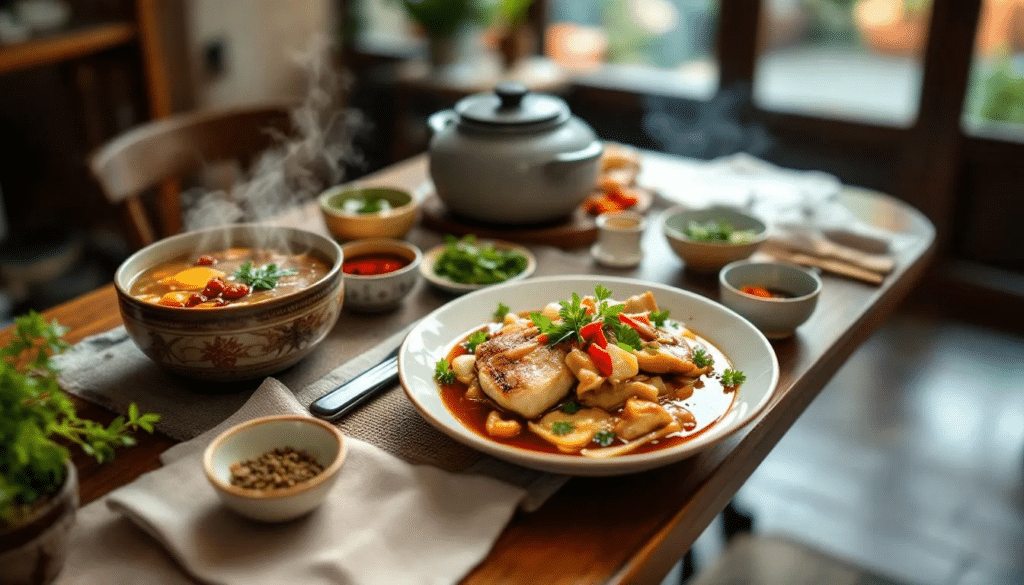
In Chinese tradition, food is medicine—especially after childbirth. For thousands of years, Chinese families have followed a practice called “zuò yuè zi” (坐月子), or postpartum confinement, where a mother rests and heals for 30 to 100 days. Postpartum confinement generally lasts from 26 to 40 days and focuses on rest and specialized care. During this time, food plays a central role. Meals are chosen carefully to help the mother recover her strength, produce breast milk, and restore balance in the body. The traditional confinement period is believed to help restore balance and prevent future health issues.
This guide will help you understand which Chinese postpartum meals are good for recovery—and which to avoid. Whether you’re a new mom, caregiver, or planning ahead, this page gives practical, expert-approved advice that is easy to follow.
Did you know? The confinement period traditionally lasts for one lunar month (about 30 days), which is why it’s called “sitting the month” (坐月子). In some regions, the practice extends to 100 days, allowing the mother’s body to fully recover from childbirth.
The practice of zuò yuè zi dates back over 2,000 years to the Han Dynasty. Historical texts like “The Yellow Emperor’s Classic of Medicine” mention special dietary and lifestyle practices for women after childbirth. Specific herbal remedies and practices are part of the postpartum care in Zuo Yue Zi. The Chinese postpartum program focuses on holistic care, including nourishing foods and herbal remedies. These traditions have been refined over generations and continue to be practiced today, even in modern, urban settings and among most Chinese communities worldwide.
While Western medicine has its own postpartum nutritional guidelines, the Chinese approach focuses on restoring balance and preventing future health issues through specific food combinations and preparations. Chinese postpartum meals are often prepared using slow-cooking methods to enhance digestibility and nutrient retention. Increasingly, medical professionals recognize the value of these traditional practices when applied appropriately and safely.
What Makes Chinese Confinement Meals Special?
Unlike typical daily meals, postpartum meals during confinement follow specific health principles. These meals aim to:
-
Rebuild blood and energy (qi): After giving birth, a mother loses blood and strength. Certain foods help restore both.
-
Warm the body: According to Traditional Chinese Medicine (TCM), the body is cold after childbirth. Warm meals help push out cold and improve circulation.
-
Promote breast milk production: Many soups and grains are used to increase milk supply.
-
Prevent long-term health problems: It is believed that poor postpartum care can lead to joint pain, fatigue, and weakness later in life.
-
Balance the five elements: TCM considers the balance of wood, fire, earth, metal, and water elements crucial for health restoration.
-
Restore yin and yang harmony: Childbirth creates an imbalance that proper nutrition helps correct.
The Chinese postpartum diet emphasizes the consumption of easy-to-digest proteins and grains such as fish, eggs, and chicken.
The philosophy behind these meals stems from the TCM concept of “food as medicine.” According to this belief system, foods have inherent properties that go beyond their nutritional content. Mixing warming ingredients like ginger and red dates is common in postpartum cooking to help with recovery. They are classified as:
|
Property |
Description |
Examples |
|---|---|---|
|
Hot/Warm |
Increases internal heat, stimulates circulation |
Ginger, chicken, rice wine, red dates |
|
Cold/Cool |
Reduces internal heat, avoided during confinement |
Watermelon, cucumber, cold drinks |
|
Neutral |
Balanced properties, generally safe |
Rice, pork, eggs |
|
Blood-building |
Replenishes blood lost during childbirth |
Black chicken, liver, red dates, black bean soup |
|
Qi-strengthening |
Boosts energy and vitality |
Ginseng, astragalus, walnuts |
A well-planned confinement diet carefully balances these properties to ensure the mother’s body heals properly. The preparation methods are just as important as the ingredients themselves. For example, many dishes are slow-cooked or steamed rather than fried, making them easier to digest while preserving nutrients. Calcium-rich foods are important as women’s bodies lose calcium during breastfeeding. Brown rice and millet help with gut health and provide sustained energy, making them excellent additions to the postpartum diet.
Recommended Chinese Postpartum Foods
Here are the most common and highly recommended foods to eat during confinement, based on TCM and expert recommendations:
1. Ginger
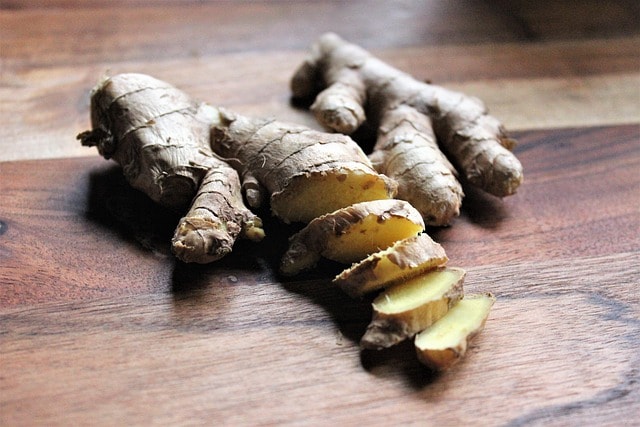
Ginger is one of the most important ingredients in Chinese postpartum cuisine. It warms the body, helps digestion, and removes “wind” from the body. Fresh ginger is used in nearly every confinement dish, from soups to stir-fries. Red dates are rich in iron and vitamin C, helping to build blood, and are another staple ingredient in postpartum cooking.
How to use: Add sliced ginger to soups, stews, and stir-fries. Make ginger tea by steeping sliced ginger in hot water with red dates.
TCM properties: Warm, pungent, strengthens the spleen and stomach
2. Black Sesame
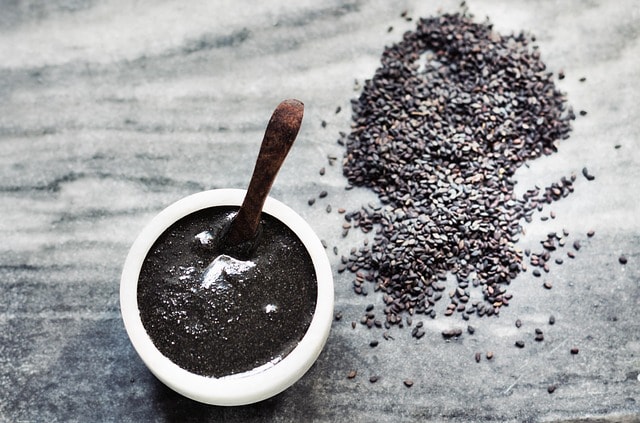
Rich in calcium, iron, and beneficial fatty acids, black sesame seeds help rebuild blood and strengthen bones. They’re also believed to benefit the liver and kidneys.
How to use: Make black sesame soup, incorporate into congee, or use in rice dishes. Ground black sesame can be added to warm milk or made into desserts.
TCM properties: Neutral, sweet, nourishes liver and kidney, promotes hair health
3. Pig’s Feet with Vinegar
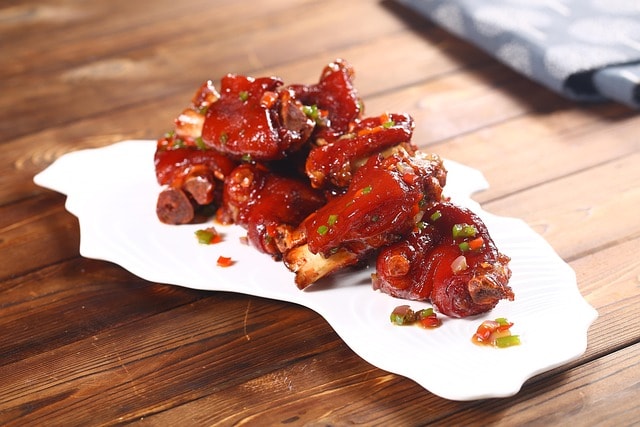
This dish is rich in calcium and collagen. It’s good for bone healing and supports milk production. The combination with vinegar helps extract calcium from the bones during cooking.
How to use: Slow-cook pig’s feet with ginger, vinegar, and eggs for a traditional healing dish.
TCM properties: Warm, nourishes blood, promotes calcium absorption
4. Chicken with Sesame Oil and Rice Wine
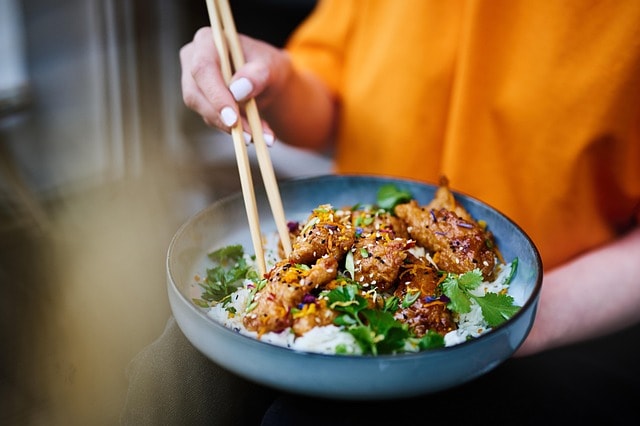
A classic confinement dish. The rice wine helps blood circulation, and the chicken provides protein and warmth. The sesame oil adds beneficial fatty acids and increases the warming properties.
How to use: Marinate chicken pieces in rice wine before stir-frying with ginger and sesame oil.
TCM properties: Warm, tonifies qi and blood, promotes circulation
5. Herbal Soups
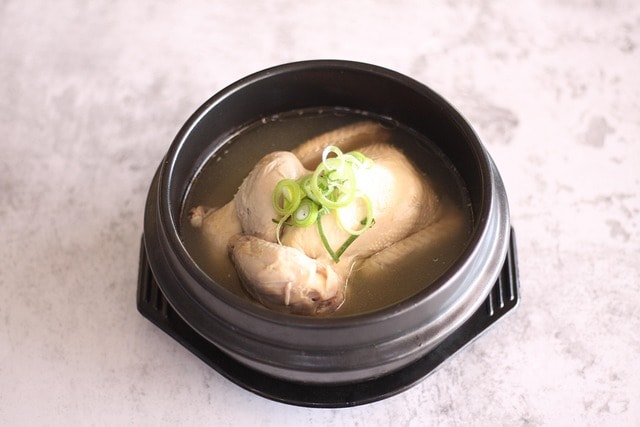
Soups made with ingredients like red dates, goji berries, angelica root (dang gui), and Chinese yam help balance hormones and build energy. These clear broths are easily digestible and nutrient-dense.
How to use: Simmer herbs with meat bones for 1-2 hours to extract maximum nutrition.
TCM properties: Varies by herb combination, generally blood-nourishing and qi-strengthening
6. Brown Rice and Millet
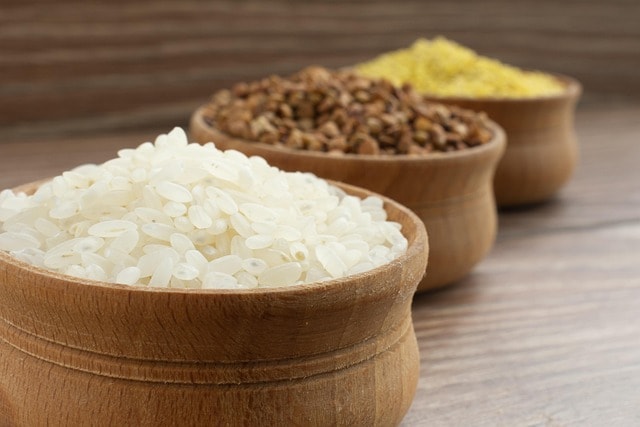
These grains are easier to digest than white rice and help with gut health and energy. They provide sustained energy and essential B vitamins for recovery.
How to use: Make congee (rice porridge) with brown rice or millet, adding ginger and other warming ingredients.
TCM properties: Neutral, strengthens spleen, provides sustained energy
7. Red Dates (Jujubes)
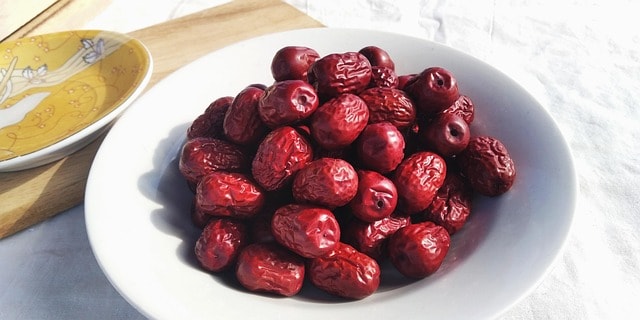
These sweet fruits are rich in iron and vitamin C. They help build blood, boost immunity, and calm the mind. They’re often added to teas and soups.
How to use: Add to soups, teas, or desserts. Can be eaten whole after stewing or made into a tea.
TCM properties: Warm, sweet, nourishes blood, calms spirit
8. Goji Berries
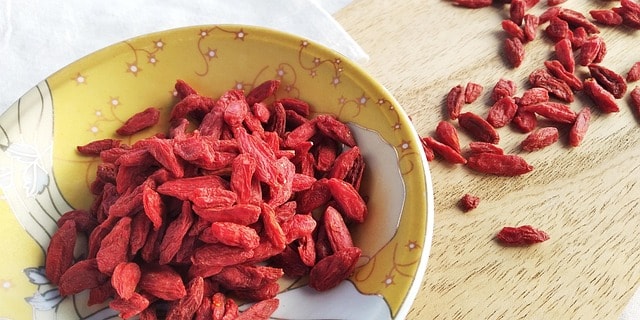
These small red berries are packed with antioxidants and are known for supporting liver and kidney function. They help improve energy levels and vision.
How to use: Add to soups, teas, or congee. Can be soaked and eaten directly.
TCM properties: Neutral to warm, nourishes liver and kidneys, improves vision
9. Black Chicken
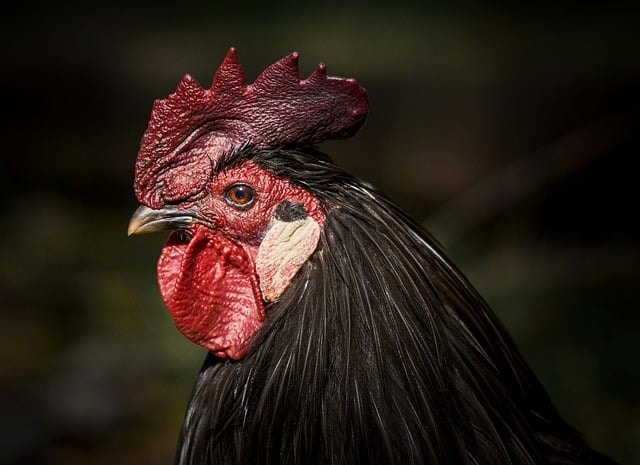
Also known as Silkie chicken, this breed has black skin and is prized for its medicinal properties. It’s higher in antioxidants than regular chicken and is excellent for blood production.
How to use: Make into soup with ginger, red dates, and goji berries.
TCM properties: Warm, tonifies kidney and liver, builds blood
10. Chinese Wolfberries
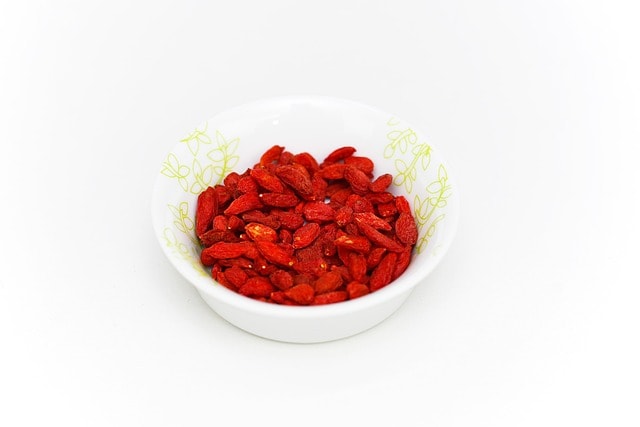
Similar to goji berries but with slightly different properties, wolfberries support kidney function and help with postpartum recovery.
How to use: Add to soups or steep in hot water to make tea.
TCM properties: Neutral, tonifies kidney and liver, improves blood quality
11. Dang Gui (Angelica Root)
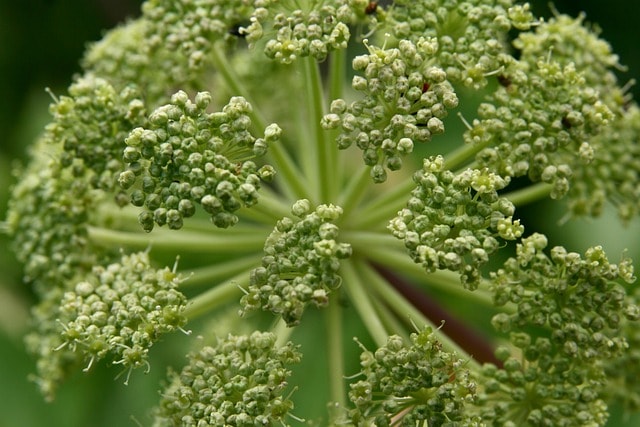
A premier herb for women’s health, dang gui helps regulate hormones and rebuild blood after childbirth.
How to use: Add to chicken or pork soups, often combined with other herbs.
TCM properties: Warm, nourishes and moves blood, regulates menstruation
12. Wood Ear Mushrooms
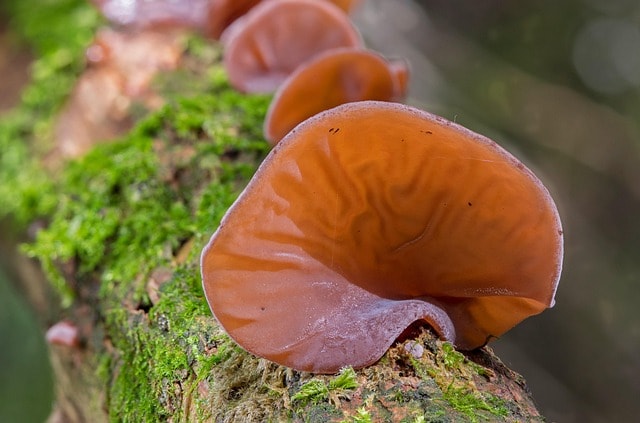
These black fungi are rich in iron and help clear the blood of impurities. They’re often used to help with postpartum blood clotting and circulation.
How to use: Soak before adding to soups or stir-fries.
TCM properties: Neutral, cools blood, promotes circulation
Traditional Healing Recipes
Sesame Oil Chicken
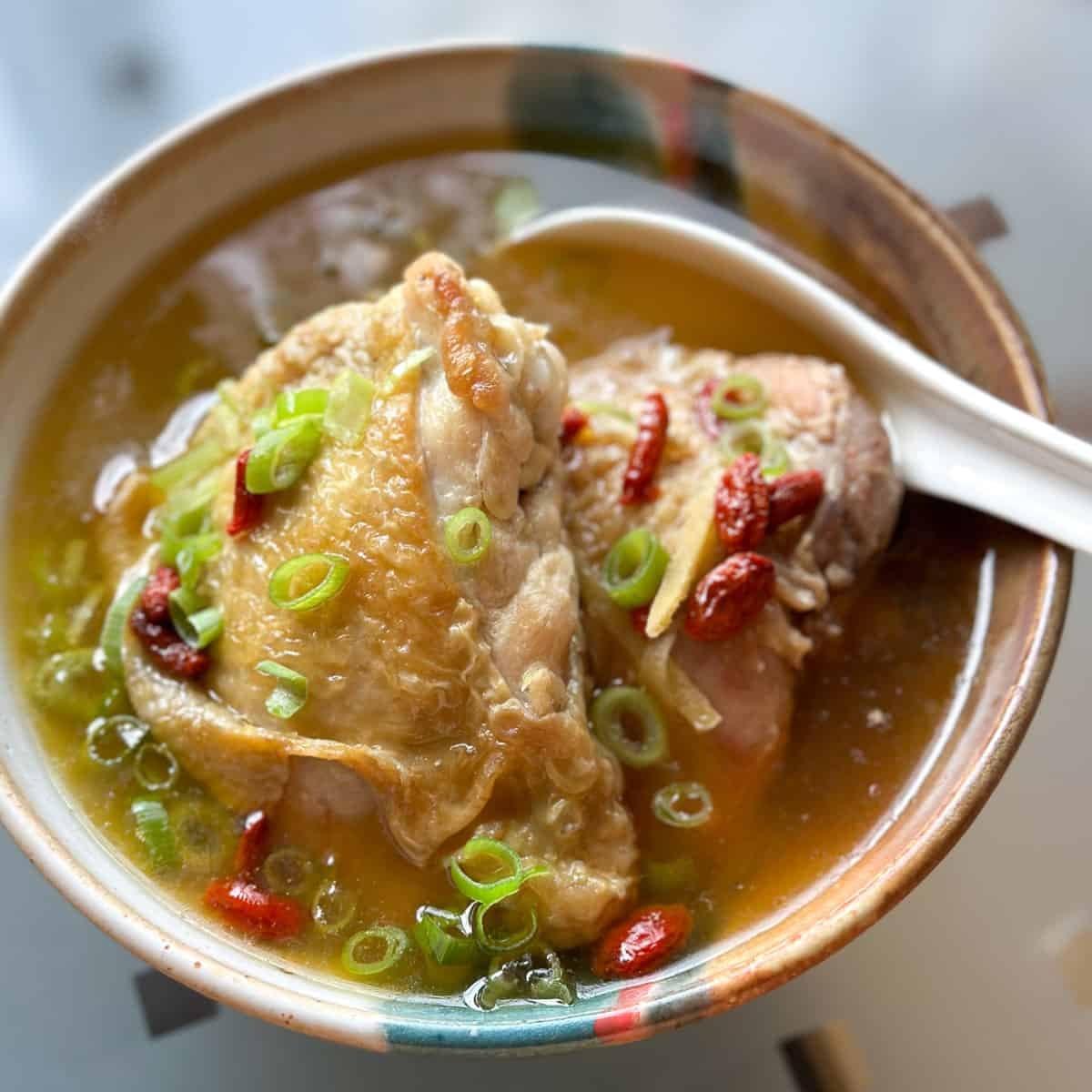
Ingredients:
-
1 whole chicken, cut into pieces
-
1/2 cup sesame oil
-
1 cup rice wine
-
10 slices of fresh ginger
-
8-10 cloves of garlic, smashed
-
Salt to taste
Instructions:
-
Heat sesame oil in a large pot over medium heat.
-
Add ginger and garlic, stir-fry until fragrant.
-
Add chicken pieces and brown on all sides.
-
Pour in rice wine and bring to a boil.
-
Reduce heat to low, cover, and simmer for 30-40 minutes until chicken is tender.
-
Season with salt to taste before serving.
Benefits: Warms the body, expels wind and cold, promotes blood circulation, and aids in milk production.
Red Date and Ginger Tea
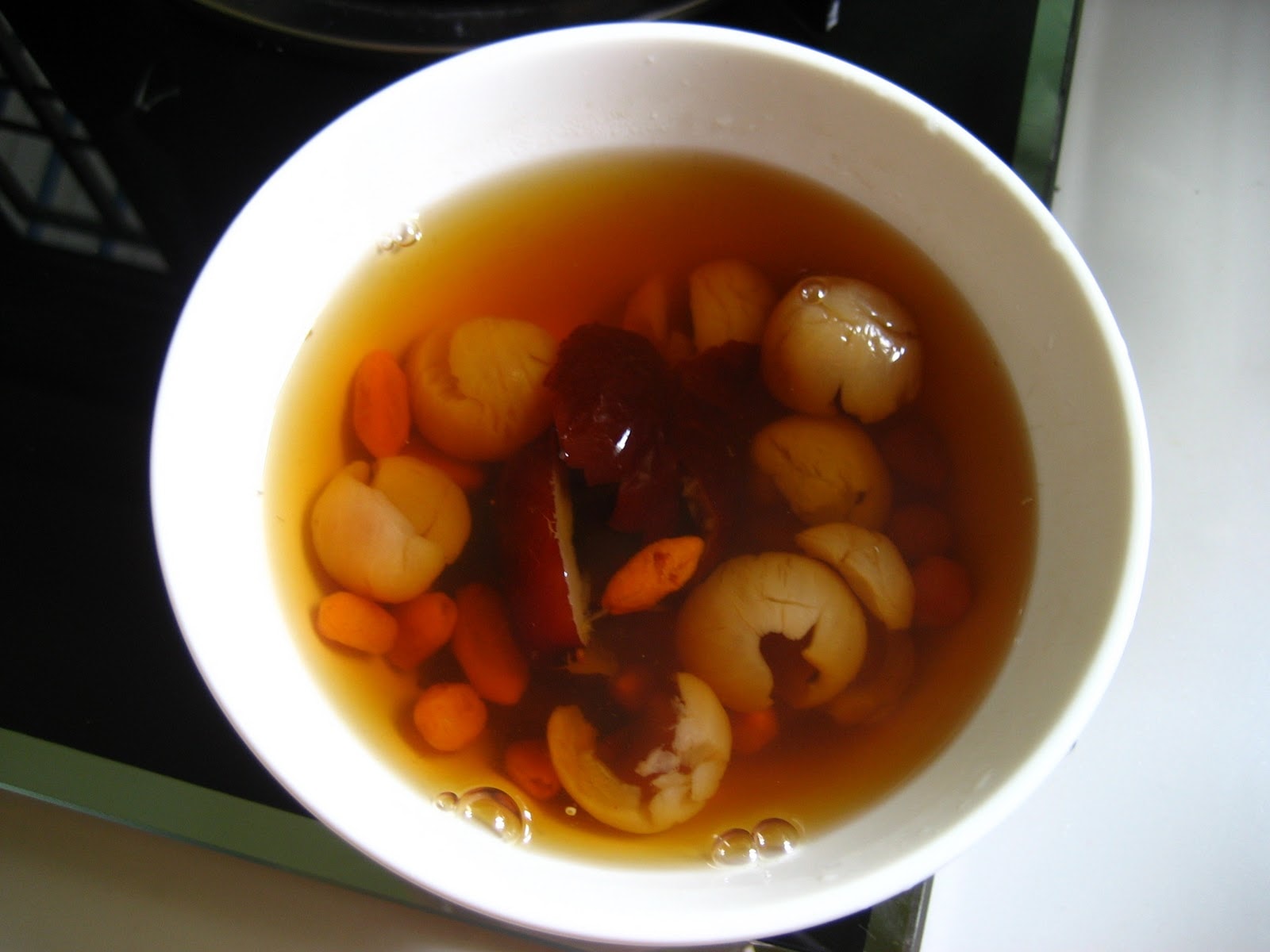
Ingredients:
-
15 dried red dates, pitted
-
3-4 slices of fresh ginger
-
8 cups of water
-
2 tablespoons of brown sugar (optional)
Instructions:
-
Rinse the red dates thoroughly.
-
In a pot, combine red dates, ginger, and water.
-
Bring to a boil, then reduce heat and simmer for 30 minutes.
-
Add brown sugar if desired and stir until dissolved.
-
Strain and serve warm.
Benefits: Improves blood circulation, warms the body, boosts energy, and helps with milk production.
Foods to Avoid During Confinement
Just as some foods are encouraged, others are avoided because they are believed to harm the body during recovery. During Zuo Yue Zi, mothers traditionally avoid cold foods as they are believed to impede recovery. Cooling foods like bitter melon, tomatoes, and cucumber should be avoided as they are believed to harm recovery. Understanding which foods to avoid is just as important as knowing which to eat.
Important: While these traditional restrictions have been followed for generations, always consult with your healthcare provider about your specific dietary needs, especially if you have any health conditions or concerns.
Cool and Cold Foods
According to TCM, the mother’s body is in a vulnerable state after childbirth and is particularly susceptible to “cold invasion.” Therefore, foods with cooling properties are strictly avoided. Raw foods are harder on the digestive system and should be avoided postpartum:
-
Raw vegetables and fruits: Especially those with cooling properties like watermelon, cucumber, pear, and banana.
-
Cold drinks: Ice water, cold juices, and refrigerated beverages are believed to shock the system and constrict blood vessels.
-
Cold desserts: Ice cream, frozen yogurt, and chilled puddings are avoided completely.
-
Salads: Raw salad greens are considered too cooling and difficult to digest.
Greasy and Fried Foods
These foods burden the digestive system when it’s already working hard to recover:
-
Deep-fried foods: Fried chicken, french fries, and other heavily fried items slow down digestion.
-
Overly oily dishes: Foods with excessive oil can cause digestive discomfort.
-
Fatty meats: Very fatty cuts of meat are considered difficult to digest.
Greasy and fried foods burden the digestive system which is already working hard to recover after childbirth.
Stimulants and Irritants
Substances that may affect milk production or irritate the digestive system:
-
Caffeine: Coffee, tea with caffeine, and energy drinks can disrupt sleep and pass through breast milk.
-
Alcohol: All alcoholic beverages except for small amounts of rice wine used in cooking (which evaporates during the cooking process).
-
Spicy foods: Hot peppers, chili oil, and strongly spiced dishes are believed to create “heat” that can be passed to the baby through breast milk.
Sour Foods
Traditionally avoided as they’re believed to cause joint problems later:
-
Vinegar: Except when used in specific medicinal dishes like pig’s feet with vinegar.
-
Citrus fruits: Oranges, lemons, and other acidic fruits.
-
Pickled foods: Any vegetables or foods preserved with vinegar or through fermentation.
Sour foods are traditionally avoided after childbirth as they may cause joint problems later.
-
Vinegar: Except when used in specific medicinal dishes like pig’s feet with vinegar.
-
Citrus fruits: Oranges, lemons, and other acidic fruits.
-
Pickled foods: Any vegetables or foods preserved with vinegar or through fermentation.
“Wind-Inducing” Foods
Some foods are believed to cause “wind” which can lead to joint pain and other issues:
-
Bamboo shoots: Considered “wind-inducing” and cooling.
-
Certain seafood: Particularly shellfish like crab and some types of fish.
-
Bean sprouts: Both mung bean and soybean sprouts are avoided.
While these restrictions may seem extensive, they are temporary and based on generations of observation and practice. Modern adaptations often take a more balanced approach, focusing on the most important principles while allowing for some flexibility based on individual needs and circumstances.
Sample One-Week Chinese Postpartum Meal Plan
This comprehensive meal plan gives you a good idea of what a week of confinement meals may look like. Adjust based on personal needs, allergies, or doctor’s advice. Each day provides balanced nutrition focusing on recovery and milk production.
Day 1
|
Meal |
Food Items |
Benefits |
|---|---|---|
|
Breakfast |
Red date and longan tea, steamed egg with ginger, brown rice congee |
Gentle start to digestion, protein for healing, warmth from ginger |
|
Mid-morning |
Walnut and black sesame soup |
Calcium, iron, and healthy fats for brain health and milk production |
|
Lunch |
Chicken in sesame oil, stir-fried spinach with garlic, brown rice |
Warming properties, iron from spinach, protein for recovery |
|
Afternoon |
Papaya and red date soup |
Aids digestion, promotes milk production |
|
Dinner |
Black chicken herbal soup, brown rice, boiled sweet potato |
Blood building, energy restoration, easy digestion |
|
Before bed |
Warm almond milk with black sesame |
Calcium for bone healing, promotes sleep |
Day 2
|
Meal |
Food Items |
Benefits |
|---|---|---|
|
Breakfast |
Ginger congee, boiled egg, stewed red dates |
Gentle warming, protein, iron |
|
Mid-morning |
Liver-nourishing tea (goji berries, red dates, longan) |
Blood building, energy boost |
|
Lunch |
Pig’s feet with vinegar, steamed broccoli, millet |
Collagen for skin recovery, calcium for bones, fiber |
|
Afternoon |
Sweet potato and ginger soup |
Energy, digestive support |
|
Dinner |
Fish soup with papaya, stir-fried tofu with ginger, brown rice |
Protein variety, omega-3 fatty acids, milk production |
|
Before bed |
Warm red bean soup with lotus seeds |
Kidney support, gentle detoxification |
Day 3
|
Meal |
Food Items |
Benefits |
|---|---|---|
|
Breakfast |
Black sesame rice porridge, steamed egg with wolfberries |
Energy, protein, eye health |
|
Mid-morning |
Chicken bone broth with ginger and Chinese dates |
Collagen, minerals, warming properties |
|
Lunch |
Stir-fried liver with ginger, steamed bok choy, millet |
Iron for blood building, gentle greens, sustained energy |
|
Afternoon |
Longan and red date tea with black sesame seeds |
Blood nourishment, energy |
|
Dinner |
Sesame oil chicken soup, stir-fried Chinese yam, brown rice |
Warming, digestive support, complex carbohydrates |
|
Before bed |
Warm walnut milk |
Brain health, sleep support |
Day 4
|
Meal |
Food Items |
Benefits |
|---|---|---|
|
Breakfast |
Oatmeal with red dates, goji berries, and walnuts |
Fiber for digestion, milk production, sustained energy |
|
Mid-morning |
Black bean soup with ginger |
Iron, protein, kidney support |
|
Lunch |
Pork with wood ear mushrooms, steamed carrots, brown rice |
Blood cleansing, vision support, easy digestion |
|
Afternoon |
Papaya and almond soup |
Digestive enzymes, milk production |
|
Dinner |
Herbal chicken soup with dang gui, stir-fried egg with tomato, millet |
Hormone regulation, protein, vitamin C |
|
Before bed |
Sweet potato soup with ginger |
Fiber, warming, sleep support |
Day 5
|
Meal |
Food Items |
Benefits |
|---|---|---|
|
Breakfast |
Rice porridge with black sesame, boiled egg, stewed pears with ginger |
Gentle digestion, protein, fruit prepared in a warming way |
|
Mid-morning |
Goji berry and red date tea |
Blood building, energy |
|
Lunch |
Steamed fish with ginger and green onion, Chinese broccoli, brown rice |
Lean protein, gentle greens, complex carbohydrates |
|
Afternoon |
Black chicken and ginger soup with red dates |
Warming, blood building |
|
Dinner |
Rice wine chicken, stir-fried mushrooms, millet |
Warming, protein variation, immune support |
|
Before bed |
Warm almond and walnut milk |
Calcium, brain health, sleep support |
Day 6
| Meal | Food Items | Benefits |
|---|---|---|
| Breakfast | Millet porridge with ginger, hard-boiled egg, stewed red dates | Warming grains, protein, iron |
| Mid-morning | Papaya and white fungus soup | Digestion, skin health, hydration |
| Lunch | Pig liver with ginger and sesame oil, stir-fried snap peas, brown rice | Iron, vitamin A, protein, gentle fiber |
| Afternoon | Longan, red date, and goji berry tea | Blood building, energy |
